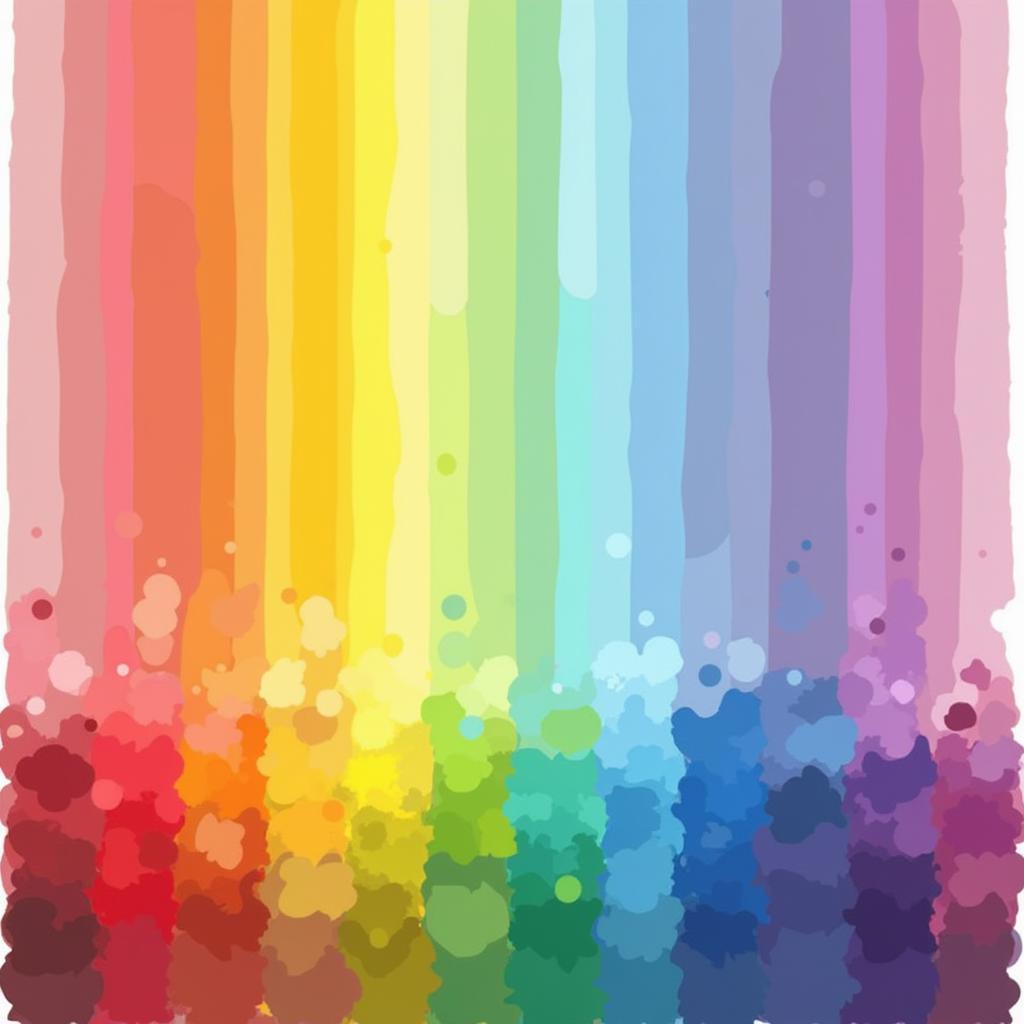When we talk about the combination of all colors, we often think of white light. But is it truly the sum of every hue, or is there more to this colorful equation? This article will delve into the fascinating world of color theory, exploring the science and perception behind how colors combine and interact to create the shades we see.
Unraveling the Mystery of Combined Colors
The answer to “What Is The Combination Of All Colors” depends on whether we’re talking about additive or subtractive color mixing. Additive color mixing deals with light, like the light emitted from your screen. Subtractive color mixing pertains to physical pigments, like paint or ink. Understanding this difference is crucial to understanding how colors interact.
In additive color mixing, the primary colors are red, green, and blue (RGB). When these colors of light are combined at full intensity, they create white light. This is the principle behind how your computer screen displays millions of colors. Conversely, the absence of all light results in black.
Subtractive color mixing works a bit differently. The primary colors here are cyan, magenta, and yellow (CMY). These pigments absorb certain wavelengths of light and reflect others, which is what our eyes perceive as color. Theoretically, combining all subtractive primary colors should result in black, as all light wavelengths are absorbed. However, in reality, due to pigment impurities, this mix often results in a dark brown. This is why black is often added as a fourth color (CMYK) in printing.
Is Black the Combination of All Colors?
While black appears as the absence of light in additive mixing, in subtractive mixing, it’s the perceived absorption of all color wavelengths. So, is black the combination of all colors? In the context of pigments, yes, theoretically. However, achieving true black with pigments is complex and often requires the addition of black ink or paint itself. This nuances the initial perception of black as merely the absorption of all color.
Think about mixing paints. If you combine all the colors in your paint box, you likely won’t get a perfect white, but rather a muddy brown. This is because paint pigments aren’t pure representations of their respective colors and contain other underlying shades.
What Color is the Combination of All Colors?
So, what color is the combination of all colors? The answer is both white and black, depending on how the colors are being combined. With light, it’s white. With pigments, it’s theoretically black, but practically, a dark brown.
 The Spectrum of Color Combinations
The Spectrum of Color Combinations
Exploring the World of Color
Understanding the intricacies of color combinations is essential for any designer, artist, or even homeowner choosing paint colors. The interplay of colors can evoke different moods, create visual harmony, and even influence our perceptions of space. Color is a powerful tool, and by grasping its complexities, we can harness its full potential. For instance, understanding color theory allows you to create compelling color palettes that resonate with your target audience. Choosing complementary colors can create a vibrant and energetic feel, while analogous colors offer a sense of calm and unity.
Consider the colors used in branding. Companies carefully select specific hues to convey their message and evoke certain emotions. Fast-food chains often use red and yellow to stimulate appetite, while tech companies might opt for blues and greens to project a sense of innovation and trust.
what colors go with lavender purple offers a great example of how understanding color combinations can enhance design choices.
Conclusion: The Colorful Conundrum
The question of “what is the combination of all colors” is more complex than it seems. The answer depends on whether we’re talking about light or pigment, and the complexities within those realms. By understanding the principles of additive and subtractive color mixing, we can unlock a deeper appreciation for the world of color and how it shapes our visual experience. This knowledge is fundamental to creating harmonious and impactful designs in any field, from painting to web design.
If you need assistance with your next project and want to explore the dynamic world of color, contact us! Call us at 0373298888, email us at [email protected], or visit us at 86 Cầu Giấy, Hà Nội. Our 24/7 customer service team is ready to assist you.
FAQ
- What are the primary colors of light? Red, green, and blue.
- What are the primary colors of pigment? Cyan, magenta, and yellow.
- Why does mixing all paint colors not create white? Due to pigment impurities and the presence of underlying shades in each color.
- What is additive color mixing? Combining colors of light.
- What is subtractive color mixing? Combining pigments that absorb light.
- Why is black added to CMY in printing? To achieve a true black since mixing CMY often results in dark brown.
- How can understanding color combinations enhance design? It allows for creating harmonious color palettes that evoke specific emotions and convey intended messages.
what are the colors of fccla explores the specific colors of a particular organization, further demonstrating the importance of color choices.
what are the colors for 25th wedding anniversary provides another example of the cultural and symbolic significance of colors.

